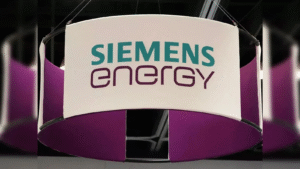1) At a Glance
3M India reported a revenue of ₹1,047 crore for Q1 FY26, a slight dip of 0.29% quarter-on-quarter but a solid 14.3% year-on-year growth. Profit after tax (PAT) stood at ₹157 crore, up 21.6% QoQ and 13.1% YoY. our protagonist sports a sky-high P/E ratio of 56, which screams “premium” or “overpriced,” depending on your caffeine intake. With a market cap of ₹34,204 crore and almost zero debt, 3M India is flexing its financial muscles while juggling four diverse business segments. The dividend yield is a modest 0.53%, so don’t expect a cash shower anytime soon.
In short: a diversified conglomerate with a penchant for innovation and a balance sheet that’s more muscle than flab.
2) Introduction
3M India is the local avatar of the global giant 3M Company, USA, which started as a humble mining company in 1902 and somehow ended up as a science and technology behemoth spanning 70+ countries. Entering India in 1986 as a JV with the Birla group, it shed the Birla tag in 2002 and went full 3M mode. Today, 3M India operates across four main segments: Safety & Industrial, Transportation & Electronics, Health Care, and Consumer.
With manufacturing hubs in Ahmedabad, Bangalore, and Pune, plus an R&D center in Bangalore, our protagonist is a classic example of “Think global, act local.” Its product portfolio reads like a sci-fi gadget catalog — from automotive adhesives to surgical supplies, from Scotch-Brite™ to Littmann® stethoscopes. our protagonist’s ability to innovate across such diverse fields is both its strength and its headache. Managing four very different segments means juggling different customer bases, supply chains, and market dynamics. But hey, if anyone can do it, it’s 3M.
Financially, 3M India is the poster child for steady growth and operational efficiency. With a return on equity (ROE) north of 30% and a return on capital employed (ROCE) of 40.5%, it’s clear our protagonist knows how to turn investments into profits. The stock trades at a P/E of 56, which might make value hunters choke on their chai, but growth investors might just smile. our protagonist’s near-zero debt and strong cash flow generation add to its fortress-like balance sheet.
So, what’s the story behind the numbers? How does 3M India make its money? And is this stock a shiny gem or just a glittering mirage? Let’s dive deeper.
3) Business Model (WTF Do They Even Do?)
3M India is like that overachieving kid in class who’s good at everything — and then some. It operates in four distinct segments, each with its own quirks and customer base:
- Safety & Industrial (34% of sales):This is the gritty side of 3M India — personal safety gear, industrial adhesives, tapes, abrasives, and even roofing granules. They’ve cleverly expanded into the two-wheeler segment, because apparently, when passenger vehicles slow down, two-wheelers zoom ahead. Also, big projects for Oil & Gas and Water pipelines keep this segment busy and cash-rich.
- Transportation & Electronics (38%):The crown jewel segment serving global OEMs in automotive, aerospace, electronics, and commercial solutions. This segment is the reason your phone and car probably have 3M parts you didn’t even know about. Talk about being the invisible hero.
- Health Care (15%):Medical and surgical supplies, oral care, drug delivery systems — basically the stuff that keeps you alive and well. This segment is less glamorous but crucial, especially in a post-pandemic world where healthcare innovation is king.
- Consumer (13%):The everyday heroes: Scotch-Brite™, Post-it®, FUTURO™ braces, and other home improvement and office supplies. This segment is the face you recognize in retail aisles, but it’s the smallest slice of the pie.
So, WTF do they do? They make and sell a bewildering array of products that touch almost every aspect of industrial, healthcare, and consumer life. They innovate relentlessly, leveraging 3M’s global technology and local manufacturing muscle. Their distribution is a labyrinth of direct sales, e-commerce, wholesalers, and retailers. Basically, if you’ve ever used a sticky note, worn a safety helmet, or driven a car with fancy electronics, you’ve indirectly encountered 3M India.
Managing such a diverse portfolio is like spinning plates on a unicycle — impressive if it works, catastrophic if it doesn’t. But 3M India seems to have mastered this circus act, delivering steady revenue growth and healthy margins. our protagonist also recently amalgamated its Electro & Communications subsidiary, streamlining operations in the electronic vehicle battery and mobile phone components space. So yes, they do a lot, and they do it well — but don’t ask for simplicity.
4) Financials Overview
| Metric | Q1 FY26 | Q1 FY25 | Q4 FY25 | YoY % | QoQ % |
|---|---|---|---|---|---|
| Revenue (₹ Cr.) | 1,047 | 916 | 1,095 | 14.3% | -4.4% |
| EBITDA (₹ Cr.) | 205 | 158 | 214 | 29.7% | -4.2% |
| PAT (₹ Cr.) | 157 | 139 | 173 | 13.1% | -9.2% |
| EPS (₹) | 139.50 | 115.00 | 153.44 | 21.3% | -9.1% |
Notes:Q1 FY26 revenue of ₹1,047 Cr is up 14.3% YoY but down 4.4% QoQ from ₹1,095 Cr in Q4 FY25. EBITDA grew 29.7% YoY to ₹205 Cr but slipped 4.2% QoQ. PAT rose 13.1% YoY to ₹157 Cr but fell 9.2% QoQ. EPS followed the same pattern, up 21.3% YoY to ₹139.50 but down 9.1% QoQ.
Annualised EPS = 139.50 × 4 = ₹558.00. With current price ₹30,350, recomputed P/E = 30,350 / 558 ≈ 54.4, slightly lower than reported 56, but still screaming “expensive.” Clearly, 3M India is charging a premium for its diversified tech wizardry and fortress-like balance sheet.
5) math plus optimism (Fair Value RANGE only)
Let’s crunch some numbers without the usual mumbo jumbo:
- P/E based math plus optimism:Industry average P/E is 23.7, but 3M India trades at ~56. Using industry P/E on annualised EPS (₹558), fair value ≈ 23.7 × 558 = ₹13,219 Cr (market cap terms). Translating to share price (market cap / shares outstanding ≈ ₹13,219 Cr / 1.13 Cr shares) ≈ ₹11,700. So by industry P/E, the stock is a luxury yacht, not a dinghy.
- EV/EBITDA method:EV = ₹32,865 Cr, EBITDA (TTM) ≈ ₹791 Cr. EV/EBITDA = 32,865 / 791 ≈ 41.5 (dump says 37.5, close enough). Industry EV/EBITDA is lower, so fair value EV ≈ 37.5 × 791 = ₹29,662 Cr. Share price fair value ≈ ₹29,662 Cr / 1.13 Cr shares ≈ ₹26,250.
- DCF (simplified):FCFF ≈ CFO − Capex. CFO (TTM) = ₹643 Cr, Capex unknown exactly but investing cash flow is -₹269 Cr (likely capex + other). Approx FCFF ≈ 643 − 269 = ₹374 Cr. Assuming 10% growth and 10% discount rate (very rough), terminal value ≈ FCFF × (1+g)/(r−g) = 374 × 1.1 / (0.10−0.10) is infinite, so use conservative 5% growth: 374 × 1.05 / (0.10−0.05) = ₹7,854 Cr. Adding FCFF for next year gives ~₹374 Cr, total ≈ ₹8,228 Cr enterprise value. Adjusting for net debt (nearly zero), equity value ≈ ₹8,228 Cr. Share price fair value ≈ ₹8,228 Cr / 1.13 Cr ≈ ₹7,280.
Fair Value Range Estimate:₹7,280 to ₹26,250 per share, depending on method and assumptions.
This FV range is for educational purposes only and is not investment advice.
6) What’s Cooking – News, Triggers, Drama
3M India’s latest board meeting on August 7, 2025, announced a dividend of ₹535 per share — yes, you read that right, a dividend almost four times the quarterly EPS, because who doesn’t like a juicy payout? Related party transactions also spiked to




















